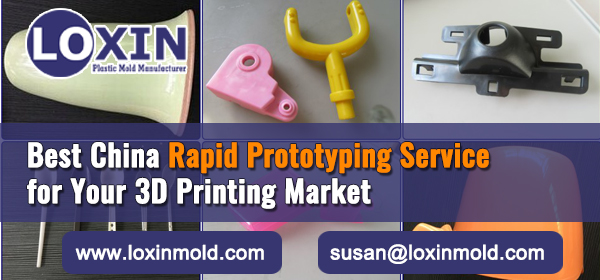Rapid prototyping is the first step in the molding process. It refers to a set of ways used in the assembly or fabrication of scale models of a physical part using a 3D computer-assisted design. The procedure is done using additive layer manufacturing or 3D printing. Rapid prototyping began in the 80s, and since then it has expanded to various sectors. It is currently used to make production-quality parts in small amounts.
Why Rapid Prototyping?
Rapid prototyping is preferred due to the benefits it provides such as:
•Thorough testing and refining of concepts. This makes it easy to minimize problems in the design which can lead to increased costs, particularly during the early project assessment stages.
•Reduced time wastage. The quality of specs and design requirements can be improved through rapid prototyping. This helps to reduce time wastage and the need to make changes afterward.
•Better user participation. Customers want to experience and feel part of the design process and this can be done through rapid prototyping. They not only want to see the process but to also interact with a model that works. They can provide their feedback and specs accordingly.
•The ability to discover and realize different concepts quickly which allows for better product visualization. It becomes easy to grasp the product properties and design.
•Easy application of repeated designs and incorporation of changes that allow proper evaluation and product testing. This is a great roadmap that helps refine the final product.
Services involved in Rapid Prototyping
Among the services involved in the rapid prototyping process include:
•CNC Machining-This involves machining of parts from different metal and plastic materials using state-of-the-art machines with close-fitting tolerances. The materials are then machine-finished to make them more appealing. The procedure is quick and accurate.
•Vacuum casting-This is a low-investment task with fast turnaround time. It allows for better project design interaction. It is ideal for use in producing short run parts. Vacuum casting starts with the production of master models using laser sintering or stereolithography. Silicon mold is then produced by casting it around a master copy. It is then placed under vacuum to reduce instances of air bubbles. Cured silicon is then cut and master removed leaving behind copies cavity. The molding process produces high-quality parts which are good for fit and function. Through vacuum casting, various finishing degrees can be attained.
•3D Printing-a rapid process that involves the printing of parts directly from CAD files. Various technologies can be used in this process depending on customer needs.
•SLA/SLS printing processes. These allow the production of complicated internal features that are difficult to produce using traditional techniques. SLA allows the production of master patterns that are used in vacuum casting molds. Both SLA and SLS are vital when making prototypes and other finished parts.
Where to find high-quality prototypes
A 3D printed part with flaws often impacts on product manufacture, production cost, and even functionality. For quality prototypes, be sure to find a trusted rapid prototype professional. Loxin Plastic Mold Manufacturer offers a complete range of prototyping services. They use the latest techniques, skilled, and cost-effective methods to make prototypes of parts. Loxin guarantees quick services with little to no flaws due to their comprehensive and detailed prototyping process. Contact Loxin Plastic Molding for a prototyping service today.


 Best-Prototype-about-Vacuum-Form-Molds-Manufactures-in-China-LOXIN-Mold
Best-Prototype-about-Vacuum-Form-Molds-Manufactures-in-China-LOXIN-Mold Best-China-Rapid-Prototyping-Service-for-Your-3D-Printing-Market-LOXIN-Mold-Company
Best-China-Rapid-Prototyping-Service-for-Your-3D-Printing-Market-LOXIN-Mold-Company LOXIN Mold
LOXIN Mold LOXIN Mold
LOXIN Mold How-to-find-plastic-injection-molding-manufacturer-in-China-LOXIN-Mold
How-to-find-plastic-injection-molding-manufacturer-in-China-LOXIN-Mold How-to-find-the-reliable-customized-plastic-injection-molded-manufacturer-LOXIN-Mold
How-to-find-the-reliable-customized-plastic-injection-molded-manufacturer-LOXIN-Mold